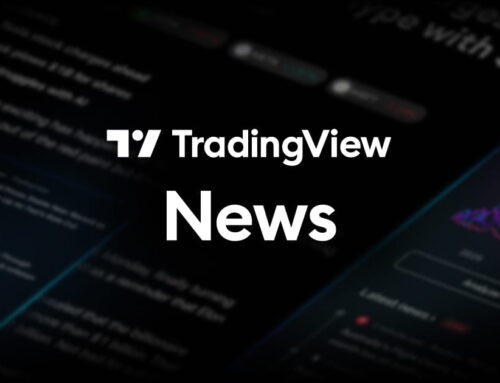This Dubious Milestone Might Be Nvidia’s Biggest Red Flag to Date — Should Investors Be W
June 6, 2025
Wall Street’s artificial intelligence (AI) darling has a conviction problem from its biggest supporters.
For more than three decades, investors have consistently had one or more game-changing innovations or trends to capture their attention at any given time. Though stock-split euphoria played a decisive role in lifting the valuations of some of Wall Street’s most-influential businesses in 2024, it’s the emergence of artificial intelligence (AI) that’s captivated the capital and imagination of the investing community for more than two years.
In its simplest form, AI empowers software and systems with the ability to make split-second decisions without human oversight. The application of this technology is so broad-reaching that the analysts at PwC believe it’ll add $15.7 trillion to the global economy by the turn of the decade.

Image source: Getty Images.
With an addressable market this large, there’s room for a laundry list of companies to be long-term winners. But as things stand now, no company has been a more-direct beneficiary of the AI revolution than semiconductor titan Nvidia (NVDA -1.44%).
While an overwhelming percentage of Wall Street analysts and everyday investors believe Nvidia stock will head higher, a newly achieved dubious milestone might spell trouble for the stock market’s AI darling.
Nvidia’s ascent to Wall Street’s largest public company was facilitated by its AI-GPU dominance
But before diving into whether or not Nvidia’s latest milestone is problematic for investors, it’s important to lay the foundation of how Nvidia became Wall Street’s most-valuable publicly traded company.
Though Nvidia has always been a key provider of graphics processing units (GPU) used for gaming and cryptocurrency mining, what kicked off its more-than-$3-trillion increase in market cap is the overwhelming demand from businesses for its Hopper (H100) GPU and next-generation Blackwell GPU architecture. Its hardware has become the “brains” of AI-accelerated data centers, with Hopper and Blackwell responsible for training large language models (LLMs) and overseeing generative AI solutions.
CEO Jensen Huang has set out an ambitious goal of bringing a new AI-GPU to market each year. Following the Hopper and Blackwell are Blackwell Ultra later this year, Vera Rubin in the second-half of 2026, and Vera Rubin Ultra in the latter-half of 2027. Huang’s willingness to spend aggressively on innovation should cement Nvidia’s hardware as the leader in data center compute ability.
Furthermore, Nvidia has been a clear beneficiary of demand for AI-GPUs outpacing their supply. When demand for a good or service is greater than its supply, the price of said good or service will climb until demand tapers. In early 2024, Nvidia was commanding more than $40,000 for its Hopper chips, which is notably higher than the $10,000 to $15,000 price tag direct rival Advanced Micro Devices was assigning to its Instinct AI-accelerating chips.
Nvidia’s CUDA software platform has been indispensable, as well. CUDA is the toolkit developers lean on to build LLMs and maximize the compute potential of their Nvidia GPUs. Think of CUDA as the umbrella that keeps customers contained within Nvidia’s ecosystem of high-margin products and services.
The point being that Nvidia didn’t become the largest public company by accident. It reached the top of the mountain because it’s delivered amid the hottest trend since the advent of the internet.
This is a warning that investors would be wise not to ignore
However, things may not be perfect for Nvidia, even if its stock has skyrocketed by close to 870% since the start of 2023. While I’ve previously pointed out a number of potential headwinds for Nvidia (I’ll briefly touch on these headwinds a bit later), its latest dubious milestone might be its biggest warning to investors yet.
June 3 marked exactly four-and-a-half years (54 months) since Chief Financial Officer Colette Kress filed Form 4 with the Securities and Exchange Commission (SEC) noting that her two sons had indirectly purchased 100 shares each of Nvidia stock (200 shares on a combined basis). Dec. 3, 2020 is the last time any Nvidia insider has purchased shares of their company.

Image source: Getty Images.
Over the last 54 months, 170 separate Form 4s have been filed with the SEC outlining sales from company executive and directors. On a cumulative basis over the trailing-four-year period, insiders have dumped more than $3.35 billion worth of Nvidia stock.
To be completely upfront and objective, not all insider selling activity is inherently bad news. It’s not uncommon for the lion’s share of executive compensation at high-profile public companies to be in the form in the stock options and/or common shares (some which may vest over time). Insiders will sell a portion of their holdings or exercise stock options to cover their federal and/or state tax liability. This type of selling isn’t worrisome.
At the time same, there’s only one reason insiders buy shares of their own company’s stock: they believe it’ll head higher. Arguably no individuals know more about a company than its management team and board of directors. If not one of these individuals is willing to purchase a single share of Nvidia stock over the last 54 months, why should investors feel confident that Nvidia stock is headed higher?
A complete absence of insider buying, coupled with a steady stream of insider selling (especially in the summer of 2024), points to a potential top for Nvidia shares.
But wait — there’s more
As alluded earlier, a confluence of insider selling isn’t the only headwind Wall Street’s AI darling is contending with.
For instance, there’s a strong possibility competitive pressures have been and will continue to weigh on Nvidia’s gross margin. While most investors have been focused on the production ramp of direct competitors like AMD and China-based Huawei, the bigger concern is what future demand might look like for Nvidia’s hardware with many of its top customers by net sales internally developing their own AI-GPUs. These considerably less-costly and more readily available hardware solutions could minimize future opportunities for Nvidia.
An increase in competitive pressures has weighed on Nvidia’s lofty gross margin. NVDA Gross Profit Margin (Quarterly) data by YCharts.
To add to this point, it’s not yet clear if Nvidia’s aggressive innovation schedule is going to help or hinder its sales. On one hand, introducing a new AI chip annually affords Nvidia a reason to charge a premium for its AI-GPUs. Conversely, it also runs the risk of rapidly depreciating the value of prior-generation chips and pushing out upgrade cycles.
Nvidia hasn’t been getting much help on the regulatory front, either. Beginning three years ago during the Joe Biden administration, and continuing under President Donald Trump, Nvidia has had a number of its high-powered chips restricted for export to China. The world’s second-largest economy has consistently generated billions in quarterly sales for Nvidia.
Last but certainly not least, historical correlations are worrisome for Nvidia. Since (and including) the advent of the internet more than three decades ago, every game-changing innovation has endured an early inning bubble-bursting event. This is a function of investors persistently overestimating the adoption rate and early stage utility of a game-changing technology or trend.
Most businesses aren’t anywhere close to optimizing their Ai solutions, or even generating a positive return on their AI investments. This signals that artificial intelligence is likely the next in a long line of bubbles to burst.
This conglomeration of factors does suggest investors have something to worry about.
Search
RECENT PRESS RELEASES
Related Post





